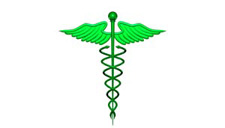Stroke Symptoms For Women

Are Stroke Symptoms For Women Any Different?
It would seem that stroke symptoms for women should not be appreciably different from those men experience, but that is not always the case. We don't hear about women having strokes all that often it seems. Strokes are often thought of being a man's disease", but that's not really the case. In fact the same thinking has been true until fairly recently in the case of heart disease, which has also been traditionally thought of as being a "man's disease".
|
|
More Deadly Than Breast Cancer - One of the greatest concerns most women have is that of getting breast cancer. The fact is, 10 times as many women die every year from cardiovascular disease, including stroke, as do from breast cancer. Stroke symptoms for women tend to be masked somewhat due to the fact that women tend to suffer strokes at an older age than do man, and the symptoms are often mistaken as being the result of other health problems older people encounter.
Among the main causes leading up to a stroke are high blood pressure, high cholesterol, and smoking. Women as well as men, stand a much better chance of avoiding a stroke by taking these causes into account, and acting upon them. A stroke is a major medical emergency, and is the result of the blood supply to the brain being disrupted, often by a blood clot. Blood carries oxygen to the brain, and the deprivation of needed oxygen will cause brain cells to start to die. The more brains cells that die, the greater the effects and the more difficult the recovery. A massive stroke of course can cause death.
|
|
The Traditional Symptoms Are Still The Most Common - Among the stroke symptoms for women, are the traditional symptoms experienced by men as well. These symptoms include a sudden numbness, weakness, or paralysis often affecting only one side of the body. Speech often becomes blurred, and sometimes the victim finds it impossible to speak at all. The onset of a stroke is usually accompanied by confusion, loss of memory, a general lack of orientation, and occasionally, a severe headache. These traditional symptoms are the most common among women, just as they are among men.
Symptoms More Often Experienced Only By Women - Women however, may experience symptoms that men often do not, and many of these symptoms are at first not associated with the onset of a stroke. Women may experience fainting or loss of consciousness, which of course can be the result of any number of things. They may also experience shortness of breath, often taken to be signs of a heart condition when the patient is taken to the emergency room. The sudden onset of pain in the face or the limbs, an outbreak of hiccups, and nausea can be indicative that a stroke has occurred. Other symptoms are a very sudden feeling of tiredness and pronounced heart palpitations. There is little doubt then, why stoke symptoms for women are often misdiagnosed, and in some cases ignored completely, in the belief that something far less serious is happening. The key word here is "sudden". It is the sudden onset of the above symptoms which are characterize the occurrence of a stroke.
Summary - There are then, several dangers then that women in particular face regarding stroke. It is still considered by many to be a man's disease, in which case a woman may not take the needed precautions to avoid a stroke in the first place. Most people, men and women, recognize a stroke is happening when experiencing a sudden numbness or paralysis on one side. Women however, have those additional symptoms which are not so easily recognized as being stroke related. Every headache, bout of hiccups, or experience of falling or stumbling, doesn't mean a trip to the emergency room is necessary, but when these symptoms come on very suddenly, that trip would be well advised.